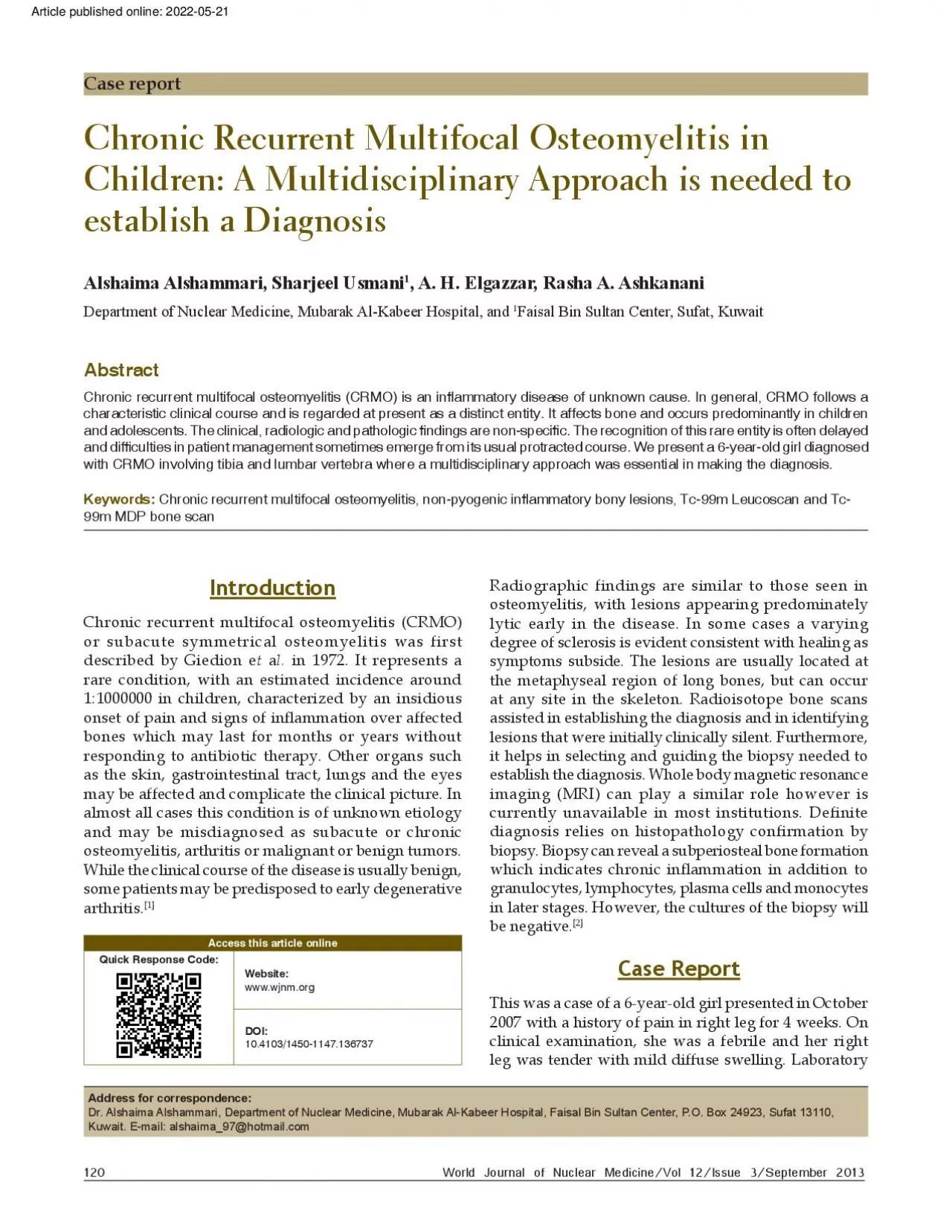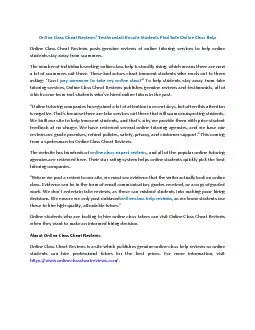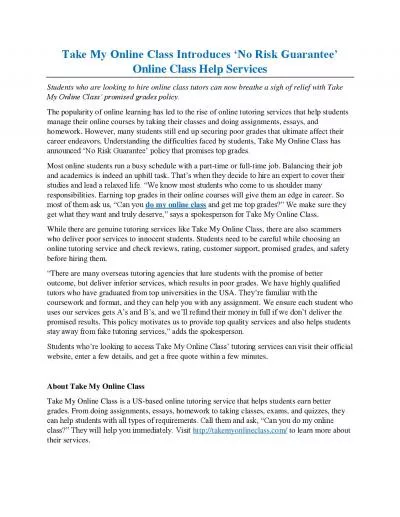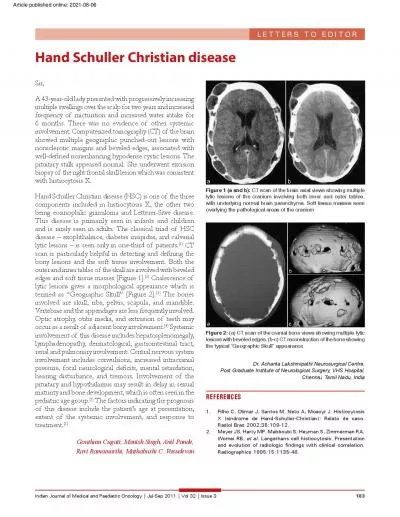PDF-Article published online 20220521
Author : priscilla | Published Date : 2022-08-23
120 World Journal of Nuclear MedicineVol 12Issue 3September 2013 Introduction Chronic recurrent multifocal osteomyelitis CRMO or subacute symmetrical osteomyelitis
Presentation Embed Code
Download Presentation
Download Presentation The PPT/PDF document "Article published online 20220521" is the property of its rightful owner. Permission is granted to download and print the materials on this website for personal, non-commercial use only, and to display it on your personal computer provided you do not modify the materials and that you retain all copyright notices contained in the materials. By downloading content from our website, you accept the terms of this agreement.
Article published online 20220521: Transcript
Download Rules Of Document
"Article published online 20220521"The content belongs to its owner. You may download and print it for personal use, without modification, and keep all copyright notices. By downloading, you agree to these terms.
Related Documents














